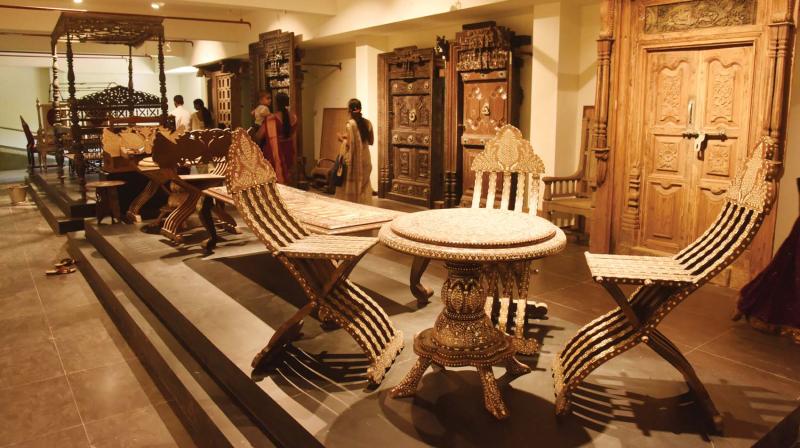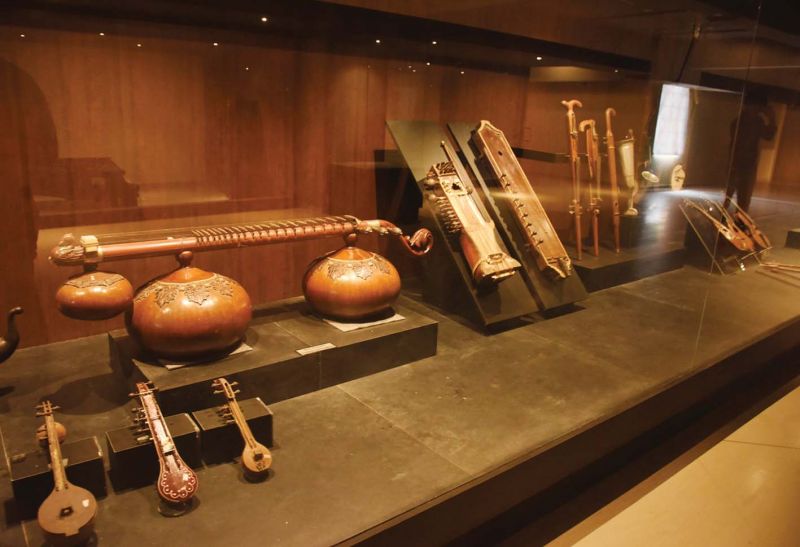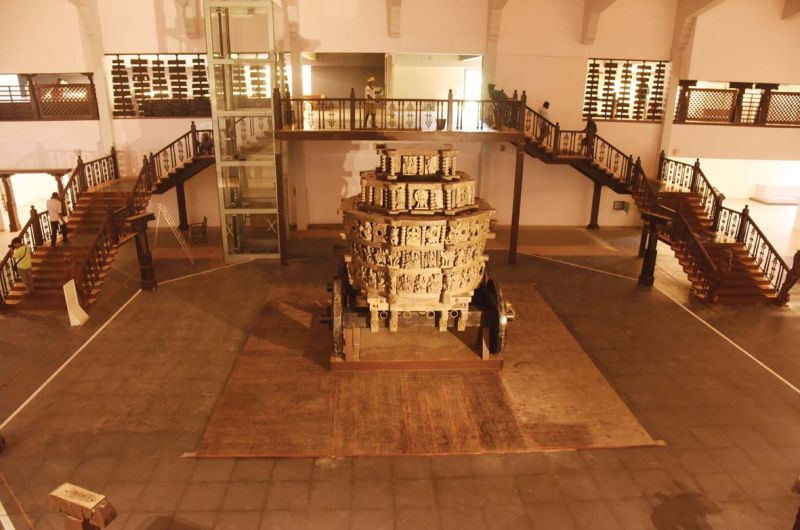Manjusha, where history unravels its treasure trove
Every single object at the museum is registered with the department of archaeology and museums.

Museums help us connect with the past, with the continuous process of learning and skill acquisition over the centuries and with wars and revolutions which helped shape humankind into the enlightened beings we are today.
There are thousands of museums across the country and one such museum which should make every history lover’s eyes gleam with pride is the Manjusha Museum in the temple town of Dharmasthala, now set to open in a new avatar with several priceless relics added to its shelves to make it a one of its kind institution in the state.
From stone age tools to nanotechnology, from vintage cars to the amazing world of fossils and dinosaurs, the museum has them all and a lot more. Gururaj A. Paniyadi profiles this amazing repository of knowledge which will leave any visitor much wiser about his roots and the amazing progress humanity has made across time.
 44
44
Suresh, a student from Mangaluru, has visited the Dharmasthala museum several times and was able to feast his eyes on several rare and unique artefacts which he and hundreds of children like him had only read about in books or were told by their teachers. The statistics tell the amazing story—over 50,000 students have visited the museum from various parts of the state till now.
The items on display are enough to keep their grey cells ticking—there are stone age tools, the magic of nanotechnology, palm leaves, the implements used to write on them and the world of evolution, unveiled before their eyes step by step.
The bigger and better Manjusha Museum, spread across 1.04 lakh sq feet was formally inaugurated a few days ago and is likely to be thrown open to the public by the month-end. The artefacts are mostly from the private collection of Dharmadhikari Dr D Veerendra Heggade, the man behind this remarkable initiative.
The museum, now with about 8,000 unique artefacts, is situated about 200 metres from the famed temple. “When I took charge as the Dharmadhikari of the temple, 50 years ago, I saw old material of the temple well preserved in a room at the temple premises. Our ancestors never disposed of antiques but preserved them carefully. I felt every piece there had historic and cultural importance and decided to provide them a good display,” says Dr Heggade recollecting the beginning of his herculean effort.
And how was the museum born? A room called ‘Glass House,’ in his ‘Beedu,’ (the ancestral house of the Heggades) was reserved for this collection. He also gathered a lot of information during his visits to many places including the Salarjung Museum at Hyderabad in 1969 where he observed that the objects displayed belonged not only to the period prior to Salarjung but were also contemporary items like medals, presents and gifts. The local residents too lent a helping hand collecting everything from palm leaves and chairs to musical instruments and idols. Many of them even donated their own priceless relics to the museum.
This is truely a pan-Kannada collection; there are inscribed pillars, palm leaf manuscripts, furniture and weapons which have come in from Uttara Kannada, Shivamogga, and Hassan districts too. Objects for display have also been collected from religious institutions, individuals, temples, goldsmiths and craftsmen.

Every single object at the museum is registered with the department of archaeology and museums. There is a detailed description of each and every display here with the ground floor dominated by antiques and the first floor showcasing the evolution of various tools, living beings and historic processes.
At the entrance, there is a vintage beauty to keep your eyes riveted on it- a petrol fuelled pre-second world war Morris Minor car. Then comes the first section housing antiques related to the Dharmasthala temple, its history and evolution. There are old vessels, pooja items, all well preserved giving viewers a clear picture of how the temple grew into what it is today.
At the centre of the museum is the spectacularly carved wooden chariot of Srirangapatna’s Shri Gangadhareshwara Temple with the special effects and lights giving it a stunning look.
The chronological order has been adhered to while setting up the museum. The outer circle begins with the display of the extinct dinosaur fossils dating back several lakhs of centuries. “These fossils are a unique collection and are displayed here in a manner to give visitors a clear picture of how the story of the earth started,” curator Pushpadantha told Deccan Chronicle.
Then come the Stone Age weapons and instruments with the stone axes one of the major attractions. The finely preserved palm manuscripts would make anyone’s eyes remain glued to them. “We painstakingly preserved the manuscripts by cleaning and applying oil. We do it for the manuscripts of mathas and other institutions too,” Dr Heggade explains.
The artefacts related to music and media on the first floor of the museum are a must see for music connoisseurs with some of the instruments hardly known to the present generation. Not just radios and old gramophones, there are also music generating mechanisms like the Music Box- the Comb and the Pins and the phonograph on display.
The main feature however is the story of evolution— of the camera, pen, musical instruments and the radio. For example there is a carefully researched display on the progress the camera has made from the pinhole to digital camera.
“Each and every artefact has a story behind it and I love them all. The evolution of pooja utensils is very interesting as they were handmade in earlier days,” Dr Heggade says.
The idols in the museum too have an interesting story behind them. Old temple idols, which would otherwise have been disposed in water are brought to Dharmasthala and after applying the prasadam of Sri Manjunatha Swamy, they are kept in the museum.

